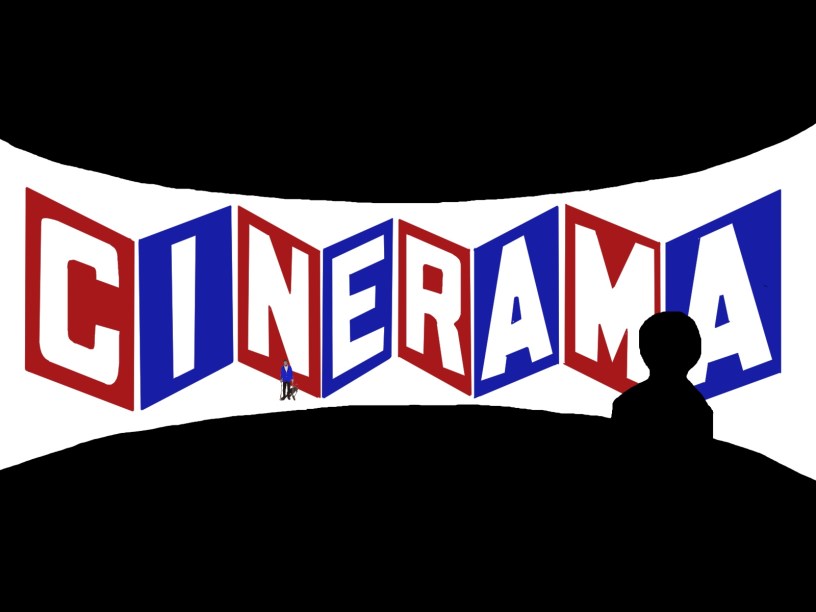
I was no longer working at the GCC Renton Village Cinemas. After a brief hiatus as a sales clerk in a bookstore at South Center in Tukwila (made brief by my forgetting to hold the last copy of a book for a customer who called in to reserve it), I was back in show business as a doorman at the Cinerama in downtown Seattle. It was a good fit. My school – Seattle University – was not too far away, just up on First Hill.
My tenure there was made interesting by the fact that it was the first time that a company changed hands while I was employed by it. It would not be the last time. When I was hired, the theater was owned by United (aka Pacific) theaters, noted in the Seattle area as a drive-in circuit. They only ran three hard tops in the state. Later, Sterling Recreation Organization (SRO) acquired those three theaters and added them to their mammoth chain.
The building sat (and still does) between 4th and 5th Avenues on Lenora Street. The lobby windows faced Lenora, which was my point of view when manning the “door.” I was right across from the box office. People came in to buy their tickets, and when it was busy they went back ouside to line up along 4th Avenue. Sometimes when it was real busy I needed to go out and check the line. We had signs that I had to move every once and a while. They read “Ticket Holders Line.” You wouldn’t want them to be waiting there for ages, not realizing they were in the wrong line, especially if they hadn’t gotten their tickets. And if the line was particularly long, I would reassure them that there was plenty of room. In fact the line had to go around the block plus, before the auditorium would fill up. Amazing how many people can be strung out in a line (sorry, unintended double entendre, it was the 70s after all).
The auditorium was red, seats and curtains. There were a little over 800 seats total, so it was just a bit smaller than Cinema 1 in Renton, but it always seemed so much bigger. The customers were fed into it from the right and the left into a central traverse aisle, from which you went back into the higher seats, or down to those seats closer to the screen.
And it was unlike any screen with which I was familiar. Usually it is all of one piece, stretched out in a frame and mounted at the front of the auditorium. This one was made up of over one thousand – one inch wide strips of screen material, placed side by side in a curved arc, and stretched their full length of 35 feet onto a frame, and attached bottom and top. And like their flat counterparts, they were each perforated to better allow the sound from the speakers to pass through. So to look at it from your seat, you were only aware of this huge screen that filled about a hundred feet across the front, and bowed away from you at the center.
It was a very impressive theater in which to view a film.

